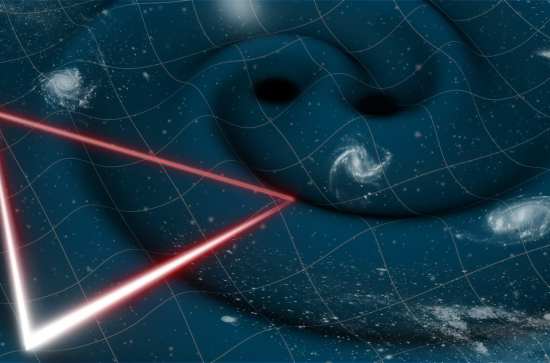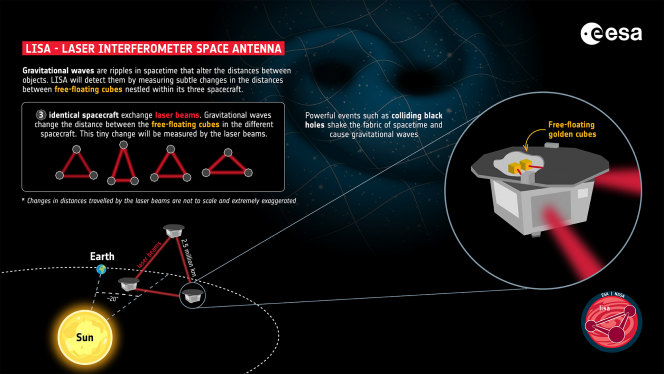
Huge congratulations to Dr John Regan, PhD student Joe McCaffrey (Dept of Theoretical Physics) and their international research colleagues on getting the go-ahead from the European Space Agency for a flagship Gravitational Wave observatory in space.
The Laser Interferometer Space Antenna (LISA) mission now advances to the construction phase.
LISA will be the first observatory in space to explore the “Gravitational Universe”. LISA will complement our knowledge about the beginning, evolution and structure of our universe. Click here to watch a video (© Max Planck Institute for Gravitational Physics/Milde Marketing Science Communication)
To learn more about LISA and the mission, click here to be redirected to ESA information on LISA
Dr John Regan:
"In 2015 we had the breakthrough of directly observing Gravititational Waves for the first time through the ground based LIGO observatories. LISA is the next stage in Gravitational Wave observations. LISA will be a space based mission in an orbit, similar to that of the Earth, around the Sun. Incredibility it will be made up of three spacecraft separated by 2.5 million kilometers. By constantly (and very accurately) measuring the relative distances between the spacecraft LISA will be able to detect if the space between spacecraft becomes stretched or compressed by Gravitational Waves. The long arms of LISA will enable it to detect the Gravitational Waves emiited by the mergers of massive black holes from right across the observable Universe. This is incredibily important as distant black holes are very difficult to see with normal telescopes but LISA offers us the tantalising possibilility of detecting the first massive black hole mergers. This is what the Maynooth team are after. One of the big mysteries in modern astrophysics is the origin of super-massive black holes that populate galaxy centres. By detecting the mergers of black holes from the early Universe when the black holes are relatively young the team at Maynooth will play a pivotal role in unwrapping that particular mystery."

